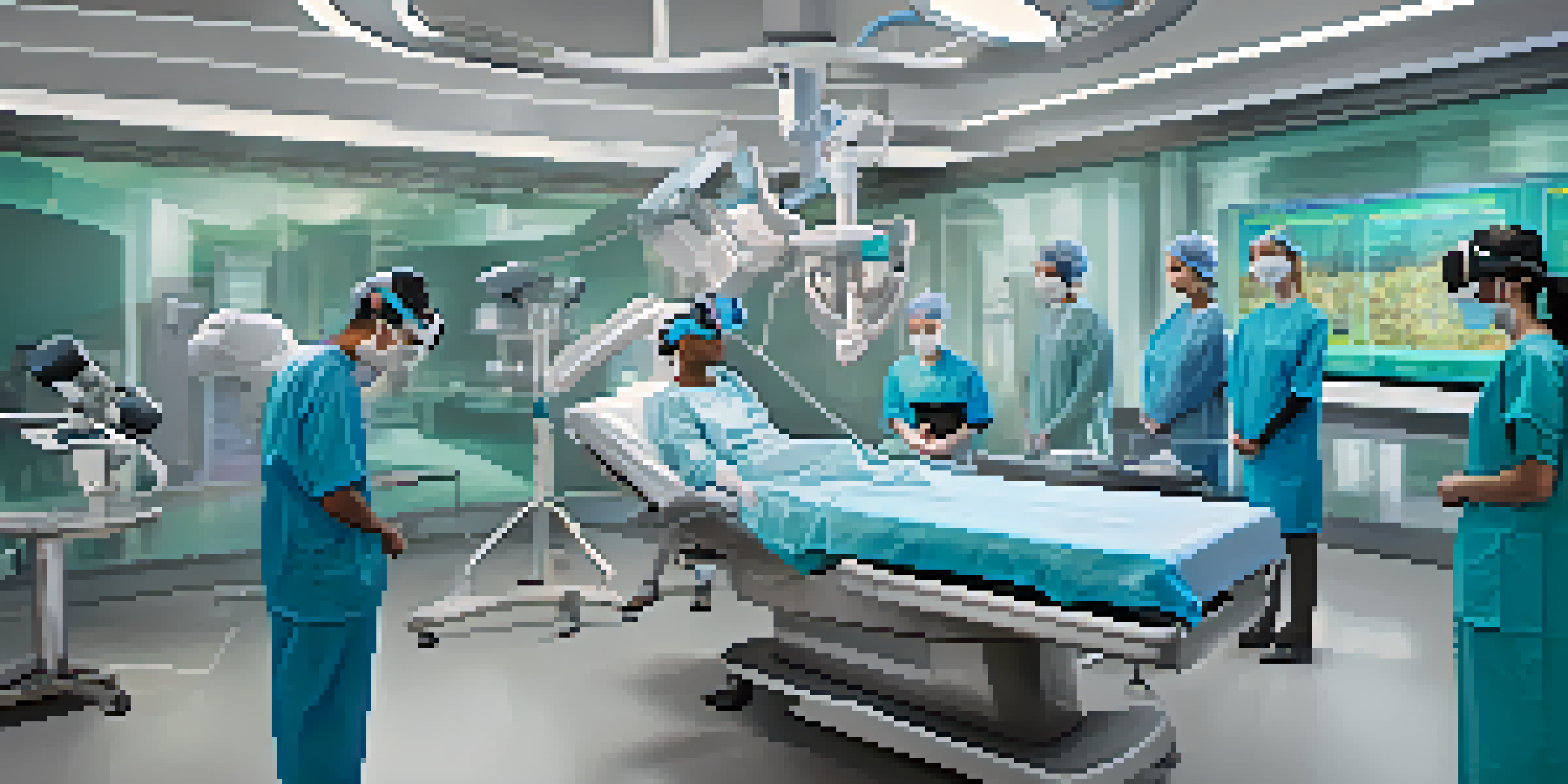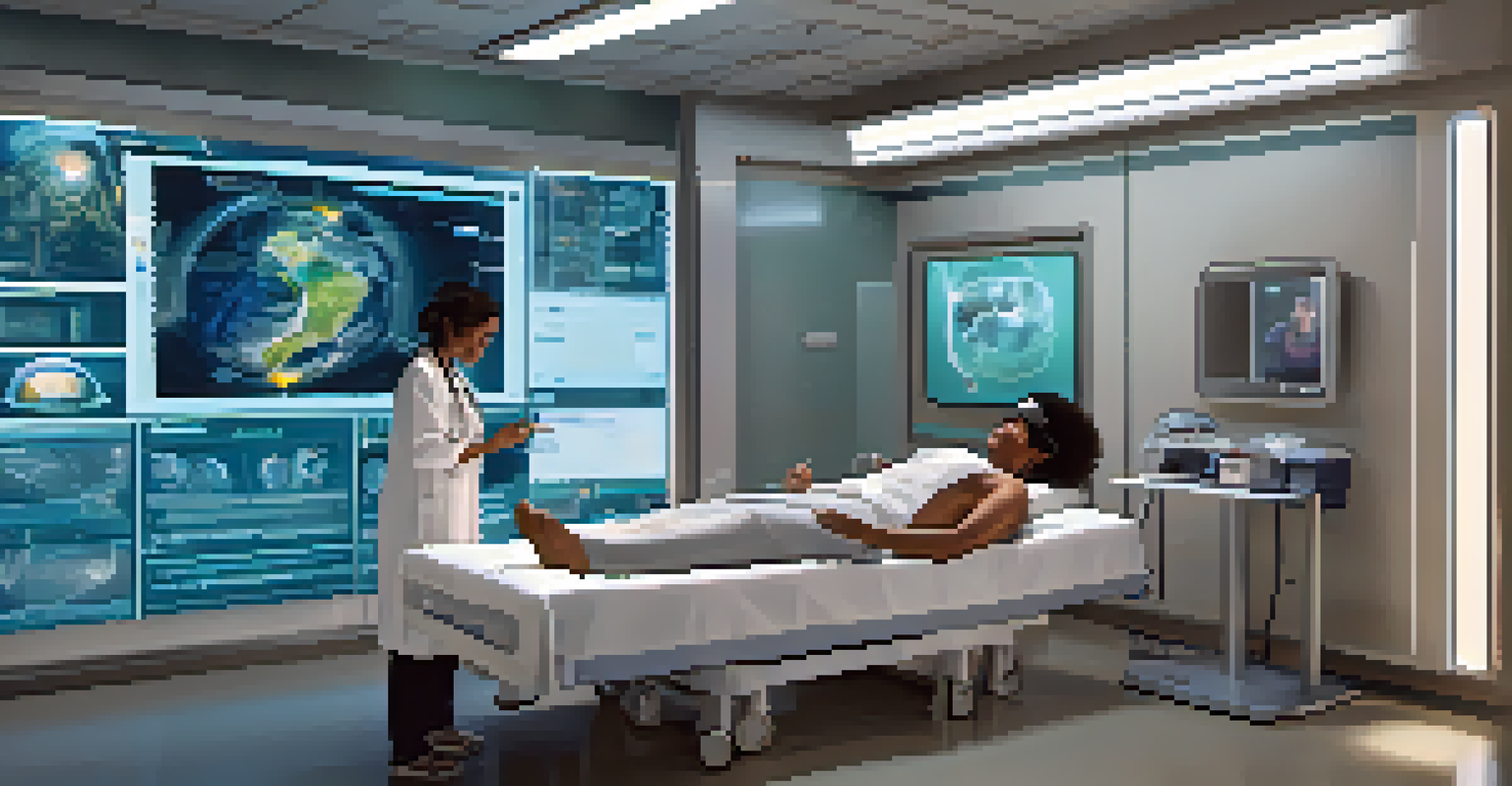How VR Can Enhance Training for Medical Professionals

The Rise of Virtual Reality in Medical Training
Virtual reality (VR) has emerged as a groundbreaking tool in medical training. This technology allows medical professionals to immerse themselves in realistic simulations, enhancing their learning experience. By creating detailed, interactive environments, VR can replicate high-pressure situations that doctors and nurses face in real life.
Virtual reality is not just a technology; it's a new way of learning that opens up possibilities we never imagined.
For instance, a surgical resident can practice complex procedures in a risk-free setting, honing their skills before ever touching a patient. This hands-on practice not only builds confidence but also improves proficiency, which is crucial in emergency situations. As VR technology continues to evolve, it promises even more sophisticated and impactful training experiences.
Moreover, the flexibility of VR allows for personalized learning paths, catering to individual strengths and weaknesses. Trainees can repeat scenarios as needed, reinforcing their knowledge and muscle memory. This adaptability is a significant advantage over traditional training methods.
Benefits of Immersive Learning Experiences
One of the most significant advantages of using VR in medical training is the immersive learning experience it provides. Immersion helps trainees engage with the material on a deeper level, making it easier to retain complex information. This is especially important in fields like medicine, where the stakes are high and precision is critical.

Furthermore, VR can simulate various patient interactions, allowing trainees to practice bedside manners and communication skills. For example, a trainee can interact with a virtual patient, receiving feedback on their approach and responses. This practice is invaluable in developing empathy and emotional intelligence, which are essential qualities in healthcare.
VR Enhances Medical Training
Virtual reality provides immersive, risk-free simulations that improve the skills and confidence of medical professionals.
Additionally, immersive experiences can reduce the anxiety that often accompanies real-life medical situations. By familiarizing themselves with various scenarios through VR, trainees can approach their first real-life experiences with greater calm and assurance.
Safe Environment for Error Learning
In traditional training settings, making mistakes can lead to dire consequences. However, VR creates a safe space for medical professionals to learn from their errors without endangering patients. This 'trial and error' approach is crucial for mastering complex skills and decision-making processes.
The future of medical training lies in immersive experiences that prepare healthcare professionals for the complexities of real-world practice.
Take, for instance, the scenario of a surgical error. In a VR simulation, a trainee can experience the consequences of their decisions and learn how to rectify mistakes effectively. This instant feedback loop allows for a deeper understanding of the implications of their actions in a controlled environment.
By embracing mistakes as part of the learning process, VR fosters a growth mindset among medical professionals. They become more resilient and better prepared to face real-life challenges, ultimately leading to improved patient outcomes.
Bridging the Gap in Remote Learning
The COVID-19 pandemic highlighted the need for effective remote learning solutions, and VR has stepped up to fill that gap. Virtual reality enables medical professionals to train from anywhere, breaking down geographical barriers. This flexibility is particularly beneficial for institutions in remote areas that may lack access to specialized training.
For example, a rural hospital can utilize VR technology to provide its staff with training that would otherwise require travel to urban centers. This not only saves time and resources but also ensures that healthcare providers are equipped with the latest skills and knowledge.
Safe Learning from Mistakes
VR allows trainees to learn from errors in a safe environment, fostering resilience and better decision-making.
Moreover, VR training can be updated easily to reflect current practices and technologies. This adaptability ensures that all medical professionals, regardless of location, have access to the most relevant training materials.
Enhancing Teamwork and Communication Skills
In healthcare, teamwork and communication are just as critical as technical skills. VR training can create scenarios that require collaborative efforts among medical staff, enhancing their ability to work as a cohesive unit. By simulating real-life emergencies, trainees learn to communicate effectively under pressure.
For instance, a VR scenario might involve a multi-disciplinary team responding to a critical patient situation. Each member must understand their role and communicate vital information clearly. This practice helps build trust and coordination, essential elements in any medical setting.
Additionally, working together in a virtual environment allows for the evaluation of team dynamics and individual contributions. Instructors can provide feedback on performance, helping to cultivate stronger, more efficient teams in real-world situations.
Realistic Patient Scenarios and Diversity
VR technology can also introduce a wide array of patient scenarios, encompassing different ages, conditions, and backgrounds. This diversity prepares medical professionals to handle various cases they may encounter in their practice. By experiencing a range of situations, trainees become more adaptable and culturally competent.
For example, a VR program could simulate interactions with patients from different cultural backgrounds, highlighting the importance of understanding unique healthcare beliefs and practices. This exposure is invaluable in developing a holistic approach to patient care.
Bridging Gaps in Remote Training
VR technology enables healthcare training to reach remote areas, ensuring wide access to essential skills and knowledge.
Furthermore, the ability to practice with diverse patient profiles fosters empathy and understanding among trainees. They learn to appreciate the nuances of individual patient experiences, leading to more personalized and effective care.
Future Trends in VR Medical Training
As technology continues to advance, the future of VR in medical training looks promising. Innovations such as haptic feedback will allow trainees to experience the sensation of touch, further enhancing the realism of simulations. This will make practicing procedures even more effective and lifelike.
Additionally, we can expect to see more collaborative VR training environments, where multiple users can interact in the same virtual space. This will encourage teamwork and communication skills among medical professionals, emphasizing the importance of collaboration in healthcare.

Ultimately, the integration of VR into medical training is not just a trend; it's a fundamental shift in how we prepare healthcare providers for the challenges they will face. As VR technology continues to evolve, it will play an increasingly vital role in the future of medical education.